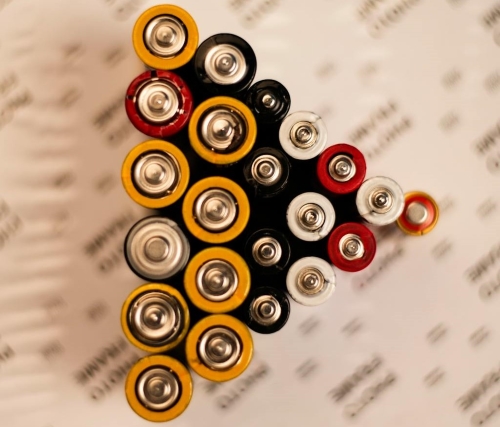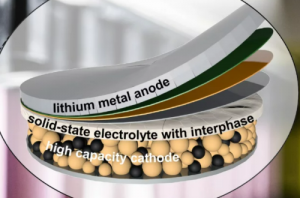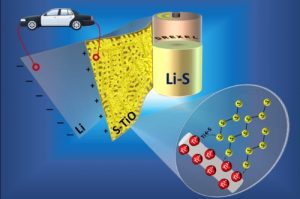Beyond Lithium-Ion: Unveiling High-Performance Batteries

Introduction:
The global demand for energy storage solutions has spurred a relentless pursuit of advancements in battery technology. Lithium-ion batteries have been the predominant force in the energy storage arena for several decades. It has been powering everything from smartphones to electric vehicles.

Batteries and Energy Storage
However, as the need for more efficient, sustainable, and high-performance batteries grows, researchers are delving into a realm beyond lithium-ion batteries. This article explores the cutting-edge materials for high-performance batteries. Hope that you can have a better understanding.
I. The Limitations of Lithium-Ion Batteries:
Lithium-ion batteries come with high energy density and long cycle life.
- They have been the backbone of portable electronics and electric vehicles.
- These devices are composed of a lithium-cobalt oxide cathode, a graphite anode, and an electrolyte.
- Such rechargeable batteries allow for efficient and lightweight energy storage.
These batteries are widespread because they can deliver a high voltage and maintain a stable charge-discharge cycle. Despite their success, lithium-ion batteries face several challenges. These problems include safety concerns, resource limitations, and the need for faster charging.
These limitations prompt researchers to explore advanced materials and alternative battery designs to meet the growing demands of modern energy storage applications.
II. Silicon Anodes: Breaking the Capacity Barrier:
One promising avenue is the integration of silicon anodes. Silicon has a much higher theoretical capacity than the graphite commonly used in lithium-ion batteries. They potentially lead to batteries with significantly higher energy density.
However, silicon faces challenges. For instance, it has the tendency to expand and contract during charging cycles. That might lead to structural degradation.
Researchers are working on nano silicon and other engineering solutions to mitigate these issues. They are going to unlock the full potential of silicon anodes.
III. Solid-State Batteries: Enhancing Safety and Energy Density:
Solid-state batteries represent a paradigm shift in battery technology. They replace the liquid electrolyte in traditional lithium-ion batteries with a solid electrolyte. These batteries offer enhanced safety, faster charging, and potentially higher energy density.

Solid-State Batteries [1]
Materials like ceramics and polymers are quite useful. They are suitable as solid electrolytes. Meanwhile, companies and research institutions are making significant strides toward overcoming the technical challenges associated with large-scale production.
IV. Lithium-Sulfur Batteries: Lighter and More Energy-Dense:
Lithium-sulfur batteries are gaining attention for their potential to outperform lithium-ion batteries in terms of energy density. Sulfur is abundant, lightweight, and can potentially provide a higher energy storage capacity.

Lithium-Sulfur Batteries [2]
Nevertheless, challenges such as the "shuttle effect" exist. Namely, there is migration of soluble lithium polysulfides, and it has impeded the commercial viability of lithium-sulfur batteries.
Ongoing research focuses on developing advanced materials and coatings to address these challenges. And, they bring lithium-sulfur batteries closer to practical use.
Related reading: Lithium-Sulfur Batteries vs. Lithium-Ion Batteries: A Comparative Analysis
V. Sodium-Ion Batteries: A Sustainable Alternative:
As lithium resources become more and more scarce, sodium-ion batteries have emerged as a more sustainable alternative. Sodium is abundant and widely distributed. It offers a cost-effective and environmentally friendly option.
Nevertheless, sodium-ion batteries currently face challenges. These limitations include lower energy density and larger cell sizes compared to lithium-ion.
Ongoing research aims to optimize materials and electrode designs to improve performance.
VI. Beyond Traditional Materials: Exploring Novel Compounds:
Researchers are also exploring novel materials and compounds beyond the conventional elements used in batteries.
Materials such as magnesium have a dual-ion storage mechanism. Scientists and researchers are investigating Mg and various metal oxides for their potential in high-performance batteries.
These explorations into traditional materials open up new possibilities for achieving breakthroughs in energy storage technologies.
VII. Challenges and Opportunities:
While the pursuit of advanced materials for high-performance batteries holds immense promise, it is not without challenges. Technical hurdles, cost considerations, and the need for scalable manufacturing processes are among the obstacles.
Researchers and industry players must overcome these barriers. Yet, the rewards are significant. The benefits range from longer-lasting electric vehicles to grid-scale energy storage. They can support renewable energy integration.
VIII. Future Outlook:
Numerous companies and research institutions are currently making efforts to bring advanced battery technologies to the commercial market. They include startups focusing on specific materials and major players investing in next-generation energy storage.
The race to bring high-performance batteries to the market is gaining momentum. The successful deployment of these technologies has the potential to change various industries. And, they drive the transition toward a more sustainable and energy-efficient future.
Conclusion:
High-performance batteries beyond lithium-ion involve a realm of innovative materials and groundbreaking technologies. Silicon anodes, solid-state batteries, lithium-sulfur batteries, sodium-ion batteries, and novel compounds are among the avenues. They are going to overcome the limitations of traditional lithium-ion technology.
Scientists uncover the capabilities of these advanced materials and successfully navigate existing challenges. Also, we find ourselves on the threshold of a groundbreaking era in energy storage. The new era promises enhanced performance and a huge impact on industries ranging from transportation to renewable energy.
The evolution of battery technology is not just a scientific pursuit. It is a crucial step towards powering a more sustainable future. For more information, please check our homepage at refractorymetal.org. A variety of advanced high-performance batteries are available.
Reference:
[1] University of Surrey (2023, April 5). New 'smart layer' could enhance the durability and efficiency of solid-state batteries. Retrieved January 29, 2024, from https://www.surrey.ac.uk/news/new-smart-layer-could-enhance-durability-and-efficiency-solid-state-batteries
[2] University of Drexel (2018, October 16). A Stabilizing Influence Enables Lithium-Sulfur Battery Evolution. Drexel News. Retrieved January 29, 2024, from https://drexel.edu/news/archive/2018/october/lithium-sulfur-cathode
{{item.content}}
LEVE A REPLY
{{item.children[0].content}}
{{item.content}}






